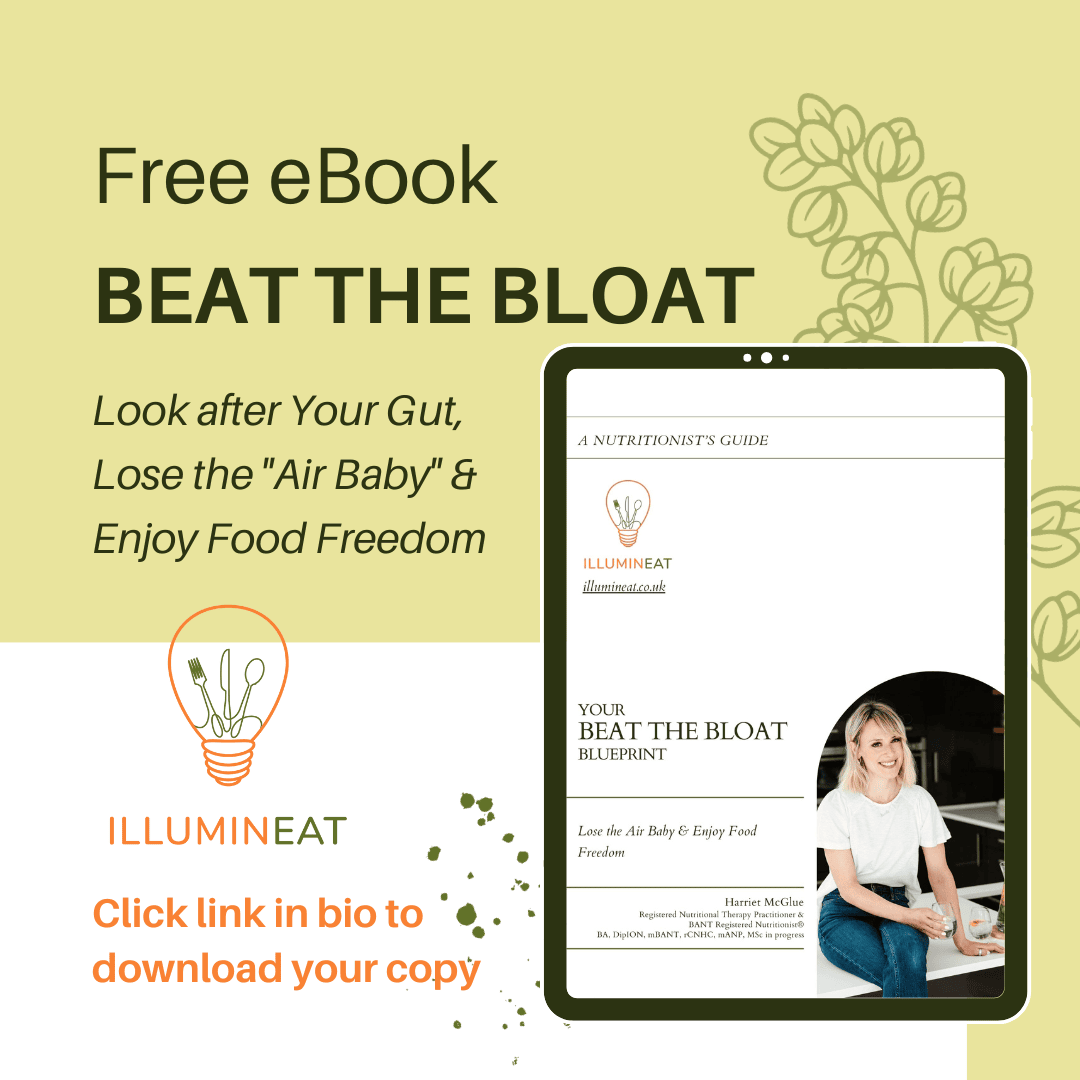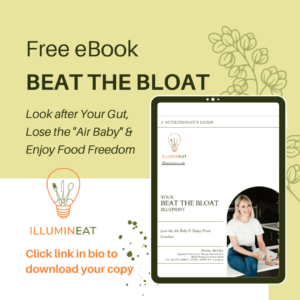Fruit and vegetables are the cornerstone of a healthy, balanced diet. You simply can’t eat well, and ensure your body gets all the micronutrients it needs, without them. Those leafy greens, dark red berries bursting with juice, fruits masquerading as vegetables (we’re looking at you, tomatoes and avocados!) – and everything in between – are veritable powerhouses of nutrients: Vitamins, minerals, and fibre being the big hitters here.
Since 1990, the WHO – backed by the NHS and government – have advised we aim for 5 a day, or 400g of fruit and vegetables daily. Why? Because we know, beyond a shadow of a doubt, that eating them reduces our risk of serious diseases including heart disease, stroke, type 2 diabetes, obesity, and some cancers. In fact, the WHO estimates that insufficient intake of fruit and veg is the cause of 14% of gastrointestinal cancer deaths, 11% of ischaemic heart disease deaths and 9% of stroke deaths annually. Which is basically saying that these deaths are preventable.
It has become increasingly apparent in recent decades that consuming a predominantly plant-based diet can help to combat inflammation in the body – and the inflammatory process is an important mediator in the majority of the major, chronic diseases we see in the Western world (think coronary artery disease, metabolic syndrome, autoimmune diseases, Alzheimer’s, Parkinson’s, IBS – depression even).
But is 5-a-day enough? Arguably not. In many countries, the recommended daily intake is higher: 6, 8 or even more a day. And recent research has suggested we may all be better off aiming for 10. It is likely that the 5-a-day recommendation was designed to be an achievable, and not off-putting, target. It may have been felt that this level of consumption should provide a basic level of micronutrient intake sufficient to stave off deficiencies. But what no one is saying, not even proponents of the 5-a-day message, is that this is an optimal intake. Not by any stretch of the imagination!
A systematic review and meta-analysis published this year which looked at 95 different studies (and was widely reported in the media) would support the assertion that the more fruit and veg we consume the better – at least, up to 10 (80g) portions a day. It also provided strong evidence that premature deaths from some of the diseases mentioned above, as well as all-cause mortality, might be reduced if they were to eat more than the current recommended guideline daily amount. The studies could not prove a causative link, and it is possible that other confounding factors may have been at play. But few would deny the strength and quality of the research.
And so it seems this may be one case where you can’t have too much of a good thing. As long, that is, that you’re not guzzling half of your 5 (or 10) a day in sugary mangoes and canned pears in syrup. I, and many healthy eating advocates would argue, that it’s not a great idea to regularly consume more than 2 or 3 portions of fruit a day, simply because of the (albeit “natural”) sugars they contain – which can still wreak havoc with our blood sugar levels. Your pancreas doesn’t really care if you’re eating refined white sugar (sucrose), honey, agave or just too much fruit; the insulin response required is identical.
So vegetables are good for you. But we already knew that. The question is, how do we realistically start consuming more? If you’re one of the 30% of Brits who struggle to even make it to 5-a-day, the new research – and chat about doubling to ten portions – might well make you laugh out loud. But it needn’t be cumbersome, expensive, boring or anything other than totally delicious. Here are some of my TOP TIPS for squeezing in more of the good stuff.
- Invest in a blender or a mini chopper and get dicing! I never make a pasta bake, stew or curry that doesn’t have at least 4 or 5 types of veg shoehorned in somehow – even when it’s not in the recipe. Generally speaking, Italian dishes (lasagne, pasta sauces) are enhanced with tomatoes, peppers, onions, aubergines, courgettes and spinach. Curries can take on larger chunks of veg: I love roasted sweet potato and sweet red onions with spinach in a chicken tikka masala or balti. Thai curries are the perfect vehicle for baby corn, sugarsnaps, aubergine chunks, capsicums, and mushrooms. And British classics – casseroles and cottage pie – are infinitely more delicious made with a “base” of finely chopped onions, garlic, celery, carrot and mushroom. Or get creative and use sweet potato or fennel minced up in there too!
- Serve up sweet potatoes rather than regular white potatoes, which pack a far greater nutritional punch! Cut into wedges and season with cumin, coriander, smoked paprika or Cajun spice and serve with a cooling lime and coriander yoghurt dip; mash with olive oil or even cheese to top that Shepherd’s pie; puree with parsnips, carrots or celeriac to accompany a classic Sunday roast – or bake in their jackets to have with your favourite toppings.
- Supplement those ready meals! We all rely on them from time to time, and there’s nothing wrong with that. When I’m tired, ill, or just can’t be bothered – and end up heading for the microwave meal aisle – one thing I always do is grab some veggies to go with it. With this tip, you’re well on your way to a balanced meal without washing, chopping or peeling a thing. A bag of microwave spinach is a failsafe option. Or a bag of mixed leaves (ring the changes- watercress one night, rocket another). Get yourself a steamer and use it! A handful each of steamed Chinese greens, broccoli, and asparagus will tick off 3 of your portions in one fell swoop!
- Don’t put vegetables in the corner. This one is about changing your perceptions and way of eating for good. Get excited about delicious food that your body will thank you for! If you’re someone who thinks about what meat (or maybe fish, once a week) you’re having for dinner, and puts a carbohydrate with it, with greens very much an afterthought – it’s time to rethink. The best and most inspiring way I know, if you’re not much of a cook already, is to start watching cooking programmes on TV. Read foodie magazines. Order something different every time you go out to eat. The more you know and understand about the way ingredients work together and can be used, the more creative and inspired you’ll feel to try new things. But start simple: Choose a mac ‘n cheese with loads of sautéed leeks, mushrooms and spinach, perhaps, over lasagne? A big juicy Portobello mushrooms with some nice blue cheese and watercress in your burger, instead of beef? A Pad Thai made with with tofu and a bag of stir-fry veg rather than the usual chicken? Your favourite Indian curry replacing the lamb with vegetables and paneer? You get the picture.
- Make each meal count. If you’re aiming for 10 a day, a croissant and a coffee for breakfast isn’t going to leave you with much of the day to make up for it. Aim for at least 2 portions at breakfast, but don’t rely on juice – at least not as a regular thing (all the sugar, none of the fibre). Add chopped fresh or dried fruit to your porridge or muesli; whip up some grain-free pancakes with mashed bananas and eggs; compote some stone fruit or apples with cinnamon to have with yoghurt, nuts, seeds and granola; or go savoury with avocado toast and eggs or a “grill up” of mushrooms, tomatoes, and sweet potato/aubergine/spinach with eggs or salmon! At lunch, avoid the sandwich option where a couple of soggy tomato slices or a lettuce leaf is probably the best you’re going to do. All the supermarkets and most of the sandwich shops/chains now stock an exciting array of salads, deli items, chopped vegetables to have with dips, vegetable-based soups or ready-to-eat hot dishes (but go for the veggie tagine with quinoa rather than the sausage roll!) Better (and cheaper) is to make and pack your own lunch…aiming for at least 3 portions.
- Variety is the spice of life – and it couldn’t be truer than with vegetables. Vary the types you buy, and the ways you cook them. Try microwaving and steaming for speed and nutrient retention; slow cooking in stews, curries and tagines; roasting or grilling for salads or with meat or fish; using raw with fruits, nuts and seeds in salads; or even in baking: Carrot or parsnip muffin anyone? Ring the changes as far as possible as you’ll optimise protection against some of the big killers. Science suggests that cruciferous vegetables such as cauliflower and broccoli are protective against many cancers, whilst apples, citrus fruits and leafy greens may help prevent cardiovascular disease and strokes.
- Snack smart. Most of us need something to see us through from the midday salad, soup or sandwich to dinner at 7 (or much later!) Rather than reaching for empty calories in the form of sugary cereal bars, chocolate or crisps, plan ahead and get creative with some fruit and veg-centred snacks. Apple slices dipped in peanut butter are divine if, like me, you’re a peanut butter fiend! Or what about some crunchy chopped veg (peppers, carrots, sugarsnap peas, radishes) with hummus or your favourite dip? Cheese with pear slices, a small cup of vegetable soup, half an avocado smashed with lime and chilli on an oatcake – the list goes on. Hell, even a slice of banana bread counts…sort of. Get stuck in and watch your daily tally soar without even trying!
















